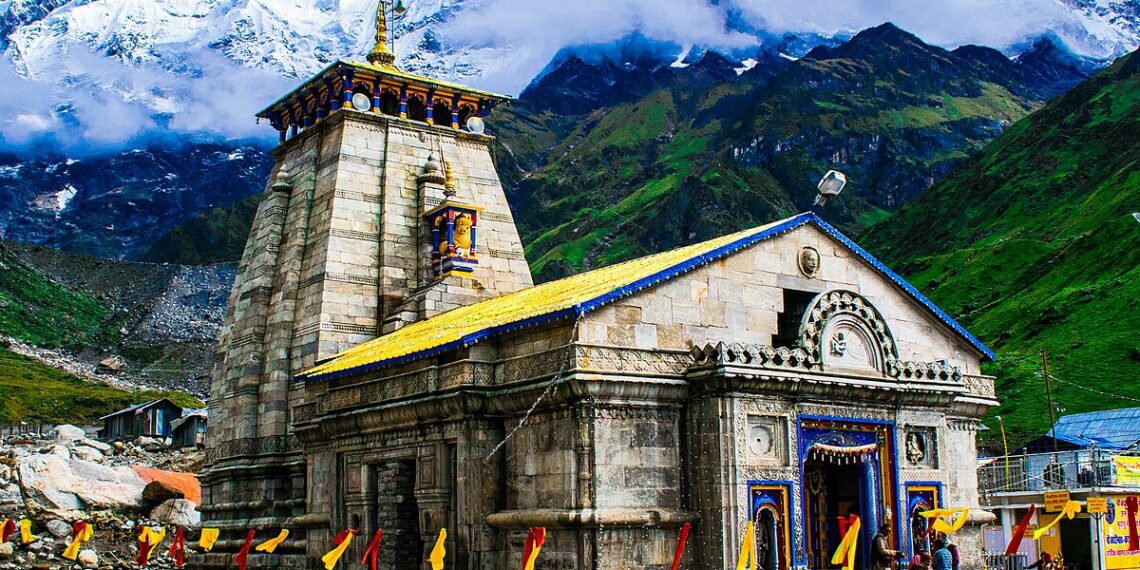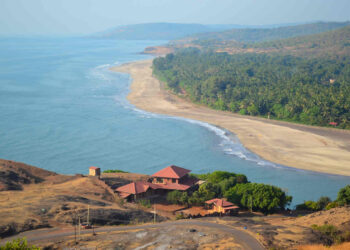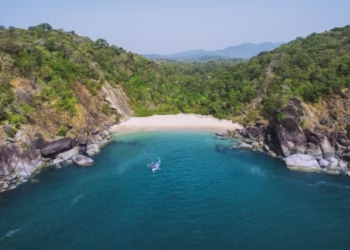Picture yourself perched at the edge of the world, where the sky brushes against the earth and the air feels so crisp it’s almost holy.
That’s Kedarnath for you—a sacred spot where spirituality and nature collide in a way that takes your breath away. Tucked high up in the Garhwal Himalayas at over 3,500 meters, Kedarnath Temple isn’t just a place to pray; it’s a journey that pushes you to your limits and then wraps you in a peace you didn’t know existed.
For hundreds of years, this ancient shrine to Lord Shiva has stood tall, a quiet beacon of faith and grit amid the wild mountains. With snow-draped peaks all around, glaciers sparkling in the distance, and the Mandakini River flowing gently nearby, it’s like time itself pauses here. Whether you’re a devotee hunting for blessings or someone who just can’t resist the pull of the mountains, Kedarnath has this magic that gets under your skin.
A Little Fun Fact: Kedarnath is one of the four holy stops on the Char Dham Yatra, a pilgrimage that pulls in millions every year. They say Lord Shiva himself blessed this remote nook, cradled between glaciers and towering cliffs.
Getting There: The Road (and Trek) to Divinity
Reaching Kedarnath isn’t your average trip—it’s an adventure that starts long before you catch sight of the temple. Here’s how to make it happen:
By Air
The closest airport is Jolly Grant in Dehradun, about 250 km away. From there, you’re in for a road trip to Rishikesh, then on to Gaurikund—the jump-off point for the trek. The drive’s about 6-7 hours, and depending on whether you grab a shared ride or a private cab, it’ll set you back ₹2,000-3,500.
By Road
If you’re the type who loves a good drive, the route from Rishikesh or Haridwar to Gaurikund is a stunner—220 km of winding roads with the Himalayas peeking out around every bend. It takes 6-8 hours to get there. Once you hit Gaurikund, the real fun begins: a 16 km trek to the temple. Not up for the hike? You can rent a horse or pony for ₹2,000-3,000. Or, if you’re pressed for time (or just fancy a bird’s-eye view), hop a helicopter from Sersi for ₹6,000-10,000 one way.
By Train
Rishikesh has the nearest railway station, roughly 220 km from Kedarnath. From there, snag a bus to Gaurikund for ₹150-250 or splurge on a taxi for ₹2,000-3,000.
Inside the Temple: What to Expect
Timings: Doors swing open at 4:00 a.m. and shut at 8:00 p.m. daily.
Entry Fees: No charge to get in, though they’ll happily take donations during the busy months (May to October). Want pics? Photography’s fine for a small ₹50-100 fee.
When It’s Open: The temple welcomes visitors from April to November—it shuts down in winter when snow blankets everything. Come spring, it reopens on Akshaya Tritiya, a day that feels extra sacred.
The Temple’s Design: Crafted by Time and Faith
Kedarnath Temple is a marvel, all rough-hewn stone stacked into something timeless. Its pyramid roof juts toward the sky, and the walls are etched with carvings of gods and symbols that whisper old stories. Inside, there’s no fancy idol—just the lingam, a simple, powerful nod to Shiva’s energy.
The setting only amps up the vibe. Snowy peaks loom overhead, rivers hum softly, and the air’s so still you’d swear you’ve stepped out of the modern world. It’s more than a temple; it’s a refuge where nature and the divine feel like old friends.
The Story Behind It: Myth and Mystery
Kedarnath’s tale is the stuff of legend. They say after the Kurukshetra War, the Pandavas came looking for Shiva to wipe their slate clean. Shiva, tricky as ever, turned into a bull and hid out in the hills. When they tracked him down, he dove into the ground, leaving just his hump behind—that’s what’s enshrined here. It’s why this place feels so holy.
No one’s quite sure when the temple first went up, but word is Adi Shankaracharya gave it a makeover in the 8th century. Since then, it’s weathered quakes, floods, and brutal winters, standing tough like it’s got some divine backup.
Where to Crash: Resting in the Wild
Places to stay near Kedarnath range from basic to cozy—here’s a rundown:
1) GMVN Guest House (2 km from the temple): Cheap and cheerful at ₹500-1,000 a night, with killer views of the temple and peaks.
2) Shivalik Hotel (Gaurikund): Comfy rooms for ₹1,000-2,500—perfect for kicking off your trek.
3) Brahmapuri Guest House (4 km from Gaurikund): Quiet and simple, ₹1,500-2,500 a night.
4) Tents: For the full mountain vibe, pitch up near the temple in season—₹500-1,000 gets you a spot.
What to Eat: Food That Warms the Soul
Eats around Kedarnath are humble but hit the spot:
1) Kedarnath Prasad Shop (near the temple): Think khichdi, puri, or rice for ₹50-100—simple fuel for the soul.
2) GMVN Canteen (Gaurikund): Dal, roti, veggies, and a cup of chai for ₹150-250.
Tips for the Trip: Gear Up Right
Layer Up: It gets chilly, especially after dark. Pack a solid jacket and thermals.
Timing Is Everything: May to October’s your window—winter shuts it all down.
Mind the Altitude: At this height, take it slow in Gaurikund to dodge the wooziness.
Stay Sharp: Monsoons can bring floods or landslides—check the forecast and tread carefully.
Why It’s More Than a Temple
Kedarnath isn’t just a dot on the map—it’s a trek that tests you, lifts you up, and ties you to the raw, wild Himalayas. Pilgrim, thrill-seeker, or nature nut, it’s got something that sticks with you. The hike’s no joke—rocky paths, icy streams, and air so fresh it stings—but when you make it, that mix of pride and calm is hard to beat.
Wrapping It Up: A Trip That Stays With You
Kedarnath’s more than stone and snow—it’s a getaway for your spirit, a slice of nature’s best, and proof faith can endure anything. Whether it’s the mountains calling, the adventure itching, or a quiet need to feel something bigger, this place delivers. So grab your gear, tie those laces tight, and head out for a journey that’ll linger in your bones long after you’re back home.











